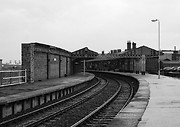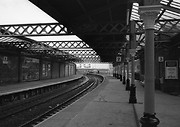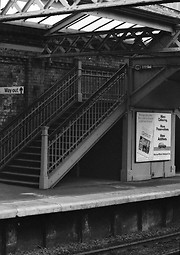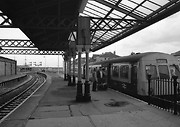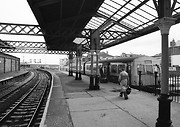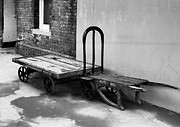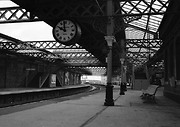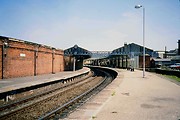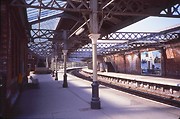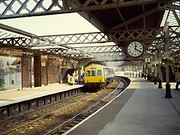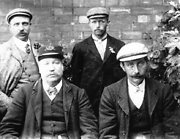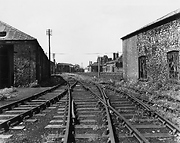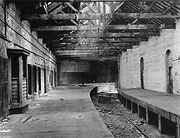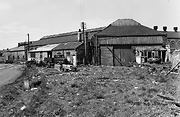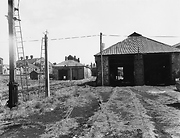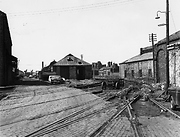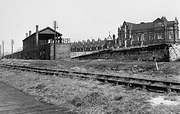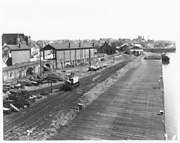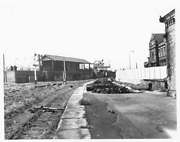 Hartlepool Sports & Leisure
Hartlepool Sports & Leisure
- Cinemas, Theatres & Dance Halls
- Musicians & Bands
- At the Seaside
- Parks & Gardens
- Caravans & Camping
- Sport
 Hartlepool Transport
Hartlepool Transport
- Airfields & Aircraft
- Railways
- Buses & Commercial Vehicles
- Cars & Motorbikes
- The Ferry
- Horse drawn vehicles
 A Potted History Of Hartlepool
A Potted History Of Hartlepool
- Unidentified images
- Sources of information
- Archaeology & Ancient History
- Local Government
- Printed Notices & Papers
- Aerial Photographs
- Events, Visitors & VIPs
 Hartlepool Trade & Industry
Hartlepool Trade & Industry
- Trade Fairs
- Local businesses
- Iron & Steel
- Shops & Shopping
- Fishing industry
- Farming & Rural Landscape
- Pubs, Clubs & Hotels
 Hartlepool Health & Education
Hartlepool Health & Education
- Schools & Colleges
- Hospitals & Workhouses
- Public Health & Utilities
- Ambulance Service
- Police Services
- Fire Services
 Hartlepool People
Hartlepool People
 Hartlepool Places
Hartlepool Places
 Hartlepool at War
Hartlepool at War
 Hartlepool Ships & Shipping
Hartlepool Ships & Shipping

Stations and Signal Boxes
Details about Stations And Signal Boxes
Most of these images are of Hartlepool (prior to 1967 West Hartlepool) Station.
'OLD' HARTLEPOOL STATION. The first Hartlepool station was opened around 1840 and according to Robert Wood's book 'West Hartlepool' p.24, appears to have been part of a Dutch ship brought onto land. The cabins housed the Booking Clerk and Station Master. The first proper station building was located at the junction of Commercial Street and Bond Street. It can be seen on old maps as a curved building, to the north of the fish quay, and is often labelled as a Goods' Shed. The later station opened to the west of this in Northgate in November 1878. It was also at this time that a new direct line to West Hartlepool opened. There had been an earlier line which crossed the Slake over sluice gates but this was cut to make an entrance to the Coal Dock. For many years after WW2, Hartlepool Station passenger service was solely for school trains from the colliery towns which carried Henry Smith School pupils. It was closed in 1964 after the 1963 Beeching Act, which resulted in the closure of the Easington, Horden and Blackhall Stations. Children from then onwards were brought into the town by bus.
WEST HARTLEPOOL STATION. West Hartlepool's first station was at the end of the line from Stockton in Middleton. Trains then halted at Stranton station, which was in Mainsforth Terrace close to Burbank Street. The next station built was opposite the old Custom House which is in Victoria Terrace, now part of Hartlepool Marina area. Next a large station, called the Leeds Northern Station, was opened in 1853 in Mainsforth Terrace and photographs of this station can be seen below. It was not until 1878 that a new connecting line meant that trains ran again between Hartlepool and West Hartlepool.
Finally the present station was opened in 1880 in Church Street and the Mainsforth Terrace station was for many years a goods' station.
West Hartlepool station became Hartlepool station in 1967 when Hartlepool and West amalgamated.
SEATON CAREW STATION. The current Seaton Carew station has been on the same site since the mid-1800s.
GREATHAM STATION. This station came after Seaton Carew on the line south. It was well away from the centre of the village and was adjacent to the Cerebos factory. For many years it was very well used as a simple route from town for Cerebos' workers. It closed in 1991.
HART STATION This station was at the north end of the town.It was at what is now the Hartlepool end of the Hart to Haswell country walk.
Location
Related items () :
 West Hartlepool Station St Aidan's Senior Girls
West Hartlepool Station St Aidan's Senior Girls
 Donated by St Aidan's Primary School
Donated by St Aidan's Primary SchoolThese St Aidan's senior girls appear to be on the northbound platform, perhaps off to Newcastle or Edinburgh? The fashions suggest that the photograph was taken just after WW2 perhaps ?
More detail » ASLEF Strike
ASLEF Strike
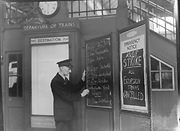 Created by NDM
Donated by Hartlepool Museum Service
Created by NDM
Donated by Hartlepool Museum ServiceThis was taken in the early 1950s during the ASLEF Strike. The notice board showing which trains would run is next to where the footbridge was.
More detail » Bridge over the line
Bridge over the line
 Created by NDM
Dated 1979
Created by NDM
Dated 1979This image of August 1979, shows the bridge which connected the two sides of the station although at this point the old southbound side was closed. The station at this time was adorned with beautiful hanging baskets as part of the Keep Britain Tidy campaign.
More detail » British Rail van
British Rail van
 Donated by Hartlepool Museum Service
Donated by Hartlepool Museum ServiceBritish Rail van with Goods Station, Mainsforth Terrace, in background.
More detail » Cemetery West Signal Box
Cemetery West Signal Box
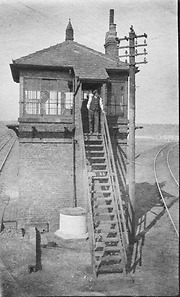 Donated by Garry Lacy
Donated by Garry LacyDated 1920
Cemetery West signal box, shown in the photo (circa 1920), was located on the railway line from West Hartlepool station, a little before it crosses over West View road on the way up the coast to Newcastle, (location was also known as ‘Cemetery West Junction’). The other line shown on the right of the signal box went to old Hartlepool station and the docks. There were two other signal boxes, ’Cemetery North’ and ‘Cemetery South’ named relative to their location with Spion Cop old cemetery.
More detail » Cliff House Junction
Cliff House Junction
 Created by unknown
Donated by Hartlepool Library Service
Created by unknown
Donated by Hartlepool Library ServicePostcard/photograph of the West hartlepool Steel Works and the multiple lines at Cliff House Junction.
More detail » Crossing the Line- Seaton Carew Station
Crossing the Line- Seaton Carew Station
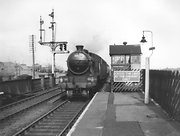 Donated by Hartlepool Library Service
Donated by Hartlepool Library ServiceSteam locomotive 67677 pulls into Seaton Carew Station. Built in 1939, the engine was withdrawn from service and scrapped in 1962.
More detail » Diesel Standing
Diesel Standing
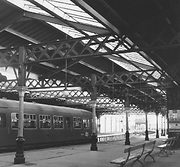 Created by unknown
Donated by Hartlepool Library Service
Created by unknown
Donated by Hartlepool Library ServiceA rather quiet-looking West Hartlepool Station looking southbound.
More detail » Doubled-headed at Hart Station
Doubled-headed at Hart Station
 Donated by Hartlepool Library Service
Donated by Hartlepool Library ServiceA passenger train with two steam locomotives, "double-headed", waits at Hart Station. The second engine has the British Railways crest on the tender. This image was probably taken in the early 1960s.
More detail » Early Wartime Memories by David Willis
Early Wartime Memories by David Willis
David Willis no longer lives in the town but has kindly sent in his reminiscences of a Wartime childhood in Hartlepool.
In the late 1930s I remember the visit of the 'chocolate train', which was parked up in a dead end platform at the east end of West Hartlepool Station. The whole train was decked out in colours which from memory resembled the Cadbury colours. I made several visits as samples of various chocolates were on display and were given away to hungry kids like me. I wonder if anyone else remembers the 'chocolate train', which left many very sad small people as it finally pulled out of the station.
The other major event was the spectacular burning down of Dyke House Farm and its surrounding buildings, which I think must have been organised by the Fire Brigade, as I distinctly remember Firemen silhouetted against the flames as the fire took hold. There was also an accompanying firework display. It seemed to me that most of the town must be in attendance as we looked on from Wharton Terrace. This was prior to the house-building on the site and also that of Dyke House School, which never got beyond the foundation stage before the onset of the War, but provided a magnificent playground for children.
With regard to St Oswald Street itself, it had its own garrison of troops, stationed in a building at the Raby Road end of the street. The building was Waugh's Bakery and the soldiers were from a Scottish regiment resplendent in their kilts. Each evening a lone piper would march up and down the street. The soldiers used a large sliding door in Wharton Terrace backlane to access the building and a well-known tramp could often be seen near this door looking for scraps of food. One day the soldiers put him in a barrel of water and scrubbed him clean. Waugh's also had a cake and bread shop immediately opposite the bakery. In addition there was a further shop at the other end of the street, known as McGhees general store.
Prewar the United Bus Company had a garage on Raby Road immediately opposite St Oswald's Street which was taken over as a Fire Station for the duration, housing several large engines.
In the early years of the War, Brougham School was taken over by the army. Many of the pupils spent the next 3 or 4 years getting a part-time education in houses. For example, a group of pupils from the St Oswald Street/Chester Road area met for about three half-days a week in my parent's house (12 St Oswald's Street), next door at number 10, or at a house at the Raby Road end of Chester Road.
When Dyke House opened we resumed full time education there and I can remember growing vegetables in the quadrangles in the 'Dig for Victory' campaign. I was there for 1 or 2 years and my teacher was Miss Salt. I took the 11 plus at Dyke House before moving on to West Hartlepool Grammar School in September 1945.
Just postwar I joined the youth club run by Westbourne Church between Stranton and the Burn Valley. We had a very successful football team, playing as far afield as Darlington and Sunderland. We were known as the Guild of Youth, a future well known team member being Brian London who fought Mohammed Ali for the World Heavyweight title. I was at the Grammar School at the time, a bastion of rugby, where the Headmaster insisted on boys playing rugby in winter if they wished to play cricket in summer, which I loved. This led to all sorts of rushing journeys between morning rugby matches and afternoon soccer games, especially if these were 20 miles apart.
More detail » First train south from northbound platform
First train south from northbound platform
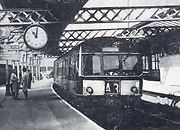 Created by NDM
Donated by Hartlepool Museum Service
Created by NDM
Donated by Hartlepool Museum ServiceDated 1964
In September 1964, the bridge at West Hartlepool station closed and both south and northbound trains left from the old northbound platform.
The town had apparently fought the change which had been suggested in April 1964, but had lost the fight. A British Railways spokesman at York said that it was for economic reasons and would be easier for passengers and staff carrying parcels as they would no longer need to use the bridge. West Hartlepool, it went on, would continue the fight.
More detail » Frederick Lacy, signalman.
Frederick Lacy, signalman.
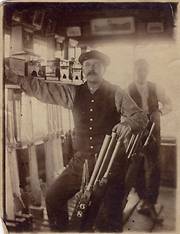 Donated by Garry Lacy
Donated by Garry LacyDated 1920
The signalman in the foreground of the photo is Frederick Lacy, The picture was probably taken in Cemetery West signal box, located on the old railway line from West Hartlepool station, in the early 1920s. His son, Thomas Lacy, also followed in the same work at the same locations.
More detail »
 Going on holiday
Going on holiday
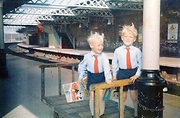 Donated by Mrs. Ann Stanbridge
Donated by Mrs. Ann StanbridgeDated 1969
Very smartly dressed youngsters Mark Stanbridge (aged 5) and his brother John (aged 6), on Hartlepool Station in 1969, about to set off on their holidays.
More detail » Hart Station- Steam Locomotive Herringbone
Hart Station- Steam Locomotive Herringbone
 Donated by Hartlepool Library Service
Donated by Hartlepool Library ServiceSteam locomotive 60524, 'Herringbone', waits at Hart Station. The engine was built in 1947, being withdrawn from service and scrapped in 1965.
More detail » Hartlepool (Headland) Railway Stations
Hartlepool (Headland) Railway Stations
In Robert Wood's 'West Hartlepool' the author tells us that the first old Hartlepool Railway Station was actually a ship brought onto land. The first custom built station on the Headland opened close to Commercial St.
It became a goods' shed when the 'new' station was built in 1878 a little further west and close to the library. This can clearly be seen on maps up to the 1960s.
For many years, this second station served passengers to West Hartlepool but in later days only carried excursion passengers and children from the nearby colliery villages who attended Henry Smith School. The station closed in 1964 following Mr Beeching's axe when passenger facilities were stopped at Easington, Horden and Blackhall. Children from out of town were then taken to school by bus.
More detail » Hartlepool (formerly West Hartlepool )Railway Station 1987 (Alan Etherington)
Hartlepool (formerly West Hartlepool )Railway Station 1987 (Alan Etherington)
Pictures taken at Hartlepool Railway Station in 1987.
Until 1967, this station was named West Hartlepool .
More detail » Hartlepool Headland first station
Hartlepool Headland first station
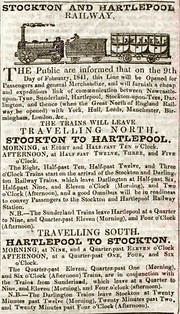 Created by Yorkshire Gazette
Dated 1841
Created by Yorkshire Gazette
Dated 1841This lovely image from the Yorkshire Gazettee suggests that the first passenger service from Hartlepool (Headland) was in February 1841.
More detail » Hartlepool Railway Station
Hartlepool Railway Station
The three coloured photographs are of Hartlepool Railway Station from 1987/88 before the rebuilding of the Station in 2023.
Kindly Donated by Alan Grange
More detail » Hartlepool Railway Station - 1975 (1)
Hartlepool Railway Station - 1975 (1)
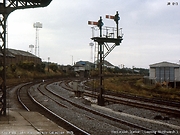 Created by Mr. John Rees
Donated by Mr. John Rees
Created by Mr. John Rees
Donated by Mr. John ReesDated 1975
A view northwards from [West] Hartlepool Station, in 1975.
More detail » Hartlepool Railway Station - 1975 (2)
Hartlepool Railway Station - 1975 (2)
 Created by Mr. John Rees
Donated by Mr. John Rees
Created by Mr. John Rees
Donated by Mr. John ReesDated 1975
A view southwards from [West] Hartlepool Station in 1975.
More detail » Hartlepool Railway Station 1983
Hartlepool Railway Station 1983
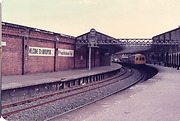 Created by Bill Henderson
Donated by Bill Henderson
Created by Bill Henderson
Donated by Bill HendersonDated 1983
Taken in the early 1980s looking towards the old southbound platform which had been out of use for some years. The bridge over the line was closed to the public although it was not to be demolished until the 1990s.
More detail » Hartlepool Station 1972 looking northbound
Hartlepool Station 1972 looking northbound
 Donated by Hartlepool Library Service
Donated by Hartlepool Library ServiceDated 1972
West Hartlepool Station on a quiet morning in 1972. The back of the United Bus sheds can be seen in the distance. The camera is looking north bound.
The minute hand of the station clock shown 'jumped' with a clunk as each minute passed.
More detail » Hartlepool Station 1972 looking northbound (2)
Hartlepool Station 1972 looking northbound (2)
 Created by unknown
Donated by Hartlepool Library Service
Created by unknown
Donated by Hartlepool Library ServiceDated 1972
A general view of West Hartlepool Station looking northbound. ' Pay train' information can be seen on the right on the side of the footbridge.
More detail » Hartlepool Station 1972 looking southbound
Hartlepool Station 1972 looking southbound
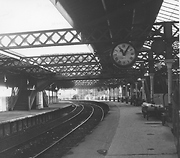 Created by unknown
Donated by Hartlepool Library Sevice
Created by unknown
Donated by Hartlepool Library SeviceDated 1972
West Hartlepool Station, looking south. On the centre right, there are doors across the entrance to the footbridge so it must have been closed when the image was taken.
More detail » Level Crossing Musgrave Street
Level Crossing Musgrave Street
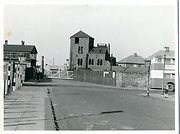 Donated by Robert Wood Collection
Donated by Robert Wood CollectionPart of the Hartlepool Museum Service collection
Across Mainsforth Terrace from Musgrave Street, there was a level crossing across the railway into Old Town. The signal box is still there in this picture. The houses were demolished in 1981 having replaced the original Old Town housing.
More detail » Looking North
Looking North
 Created by John Rees
Donated by John Rees
Created by John Rees
Donated by John ReesPart of the John Rees Archive collection
Dated 1975
A view from West Hartlepool Station, looking northwards, taken in 1975.
More detail » Looking South
Looking South
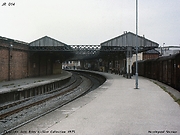 Created by John Rees
Donated by John Rees
Created by John Rees
Donated by John ReesPart of the John Rees Archive collection
Dated 1975
A view of Hartlepool Station (West Hartlepool), looking southwards, taken in 1975.
More detail » Mainsforth Terrace Railway Goods Office
Mainsforth Terrace Railway Goods Office
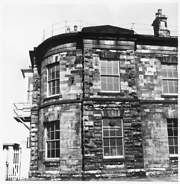 Donated by Douglas Ferriday
Donated by Douglas FerridayPart of the Hartlepool Library Service collection
Dated 1966
Mainsforth Terrace Railway Goods Office.
More detail » Mainsforth Terrace Railway Goods Station
Mainsforth Terrace Railway Goods Station
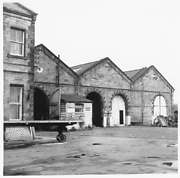 Donated by Douglas Ferriday
Donated by Douglas FerridayPart of the Hartlepool Library Service collection
Dated 1966
 Mainsforth Terrace Railway Sidings from Newburn Bridge
Mainsforth Terrace Railway Sidings from Newburn Bridge
 Donated by Douglas Ferriday
Donated by Douglas FerridayPart of the Hartlepool Library Services collection
Dated 1964
Mainsforth Terrace Railway Sidings from Newburn Bridge with the signal box.
More detail » Mainsforth Terrace Station(the second West Hartlepool station)
Mainsforth Terrace Station(the second West Hartlepool station)
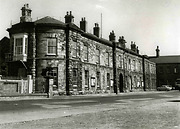 Donated by Hartlepool Library Service
Donated by Hartlepool Library ServiceMainsforth Terrace showing the building that was the second station from 1853-1880 and was originally known as The Leeds Northern Station. It was replaced by the current Church Street station.
HHT+N 110
More detail » Mainsforth Terrace then and now
Mainsforth Terrace then and now
 Created by Bill Stevenson
Donated by Hartlepool Library Service
Created by Bill Stevenson
Donated by Hartlepool Library ServiceMainsforth Terrace showing the building that was once the railway station for Hartlepool
More detail » Newburn Bridge Hauling Coal Wagons
Newburn Bridge Hauling Coal Wagons
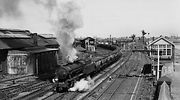 Created by unknown
Donated by Hartlepool Library Service
Created by unknown
Donated by Hartlepool Library ServiceDated 1966
A steam locomotive hauls coal wagons past the Newburn Bridge Signal Box in June 1966, with the locomotive shed in the background.
More detail » Newburn Bridge Sidings
Newburn Bridge Sidings
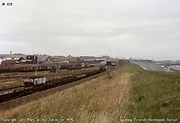 Created by John Rees
Donated by John Rees
Created by John Rees
Donated by John ReesPart of the John Rees Archive collection
Dated 1975
A view of the railway sidings (looking northwards), at Newburn Bridge, in 1975.
More detail » Old Goods Shed Mainsforth Terrace
Old Goods Shed Mainsforth Terrace
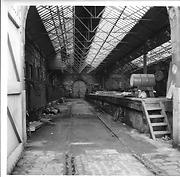 Part of the Library collection collection
Part of the Library collection collectionDated 1966
The goods shed was slightly further south of the old Mainsforth Terrace passenger station which in turn became a goods station. It was opposite Reed and Surtees Streets.
HHT&N 148
More detail » Old Goods Shed Mainsforth Terrace 2
Old Goods Shed Mainsforth Terrace 2
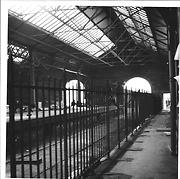 Donated by Douglas Ferriday
Donated by Douglas FerridayPart of the Hartlepool Library Service collection
Dated 1966
Old goods shed in Mainsforth Terrace to the south of the old West Hartlepool railway station.
HHT&N 147
More detail » Old Station Sidings - 1975
Old Station Sidings - 1975
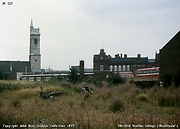 Created by Mr. John Rees
Donated by Mr. John Rees
Created by Mr. John Rees
Donated by Mr. John ReesDated 1975
The old station sidings at [West] Hartlepool in 1975, with the United Bus Station in the background.
More detail » Ornate Columns
Ornate Columns
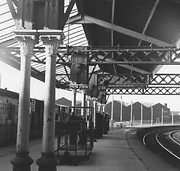 Created by unknown
Donated by Hartlepool Library Service
Created by unknown
Donated by Hartlepool Library ServiceWest Hartlepool Station once boasted some very fine iron support columns.
The bus depot in Clarence Road can be seen in the background.
More detail » Outside the Railway Station
Outside the Railway Station
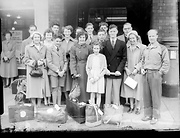 Created by NDM
Donated by Hartlepool Museum Service
Created by NDM
Donated by Hartlepool Museum ServiceThis was taken in the early 1950s and shows a group about to go somewhere. At the moment we don't know where, but their cases and the duffle bag are labelled well !
Note the Victorian VR postbox to the right of the group.
More detail » Overgrown Sidings
Overgrown Sidings
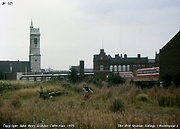 Created by John Rees
Donated by John Rees
Created by John Rees
Donated by John ReesPart of the John Rees Archive collection
Dated 1975
The overgrown sidings at Hartlepool Station (West Hartlepool), taken in 1975. In the background is Christ Church (left) and the Municipal Buildings (right).
More detail » Passenger Diesel Arriving
Passenger Diesel Arriving
 Created by unknown
Donated by Hartlepool Library Service
Created by unknown
Donated by Hartlepool Library ServiceA diesel passenger train arriving at West Hartlepool Station from the south, date unknown.
More detail » Railway Incline to Coal Drops
Railway Incline to Coal Drops
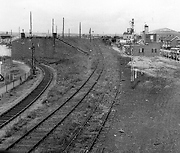 Created by unknown
Donated by Hartlepool Library Service
Created by unknown
Donated by Hartlepool Library ServiceDated 1972
View of the incline to the Hartlepool coal drops in June 1972.
More detail » Railway Office typists
Railway Office typists
 Donated by Mrs. Betty Bradley
Donated by Mrs. Betty BradleyDated 1946
Typists on the steps of the Railway Offices, Mainsforth Terrace, in 1946. Betty Bradley is in the front row, far right.
More detail » Railway Station Information Board West Hartlepool
Railway Station Information Board West Hartlepool
 Donated by Douglas Ferriday
Donated by Douglas FerridayPart of the Hartlepool Library Service collection
A railway station information board at West Hartlepool Station many years before the footbridge to the southbound platform 4 was closed. All four platforms were in use at the time and there was a regular train service to Hartlepool (Headland) station.
More detail »
 Rat Race
Rat Race
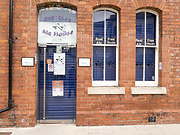 Created by Don Stephenson
Donated by Don Stephenson
Created by Don Stephenson
Donated by Don StephensonPart of the Hartlepool Public Houses collection
Dated 14
The Rat Race real ale house, Hartlepool Railway Station.
The Rat Race Ale House has been created in a converted office at Hartlepool railway station. The pub measures six metres in length and is just four-and-a-half metres wide.
More detail » Seaton Carew railway station - 1888
Seaton Carew railway station - 1888
 Created by James Whitehead Pattison
Donated by Bowes Museum, Barnard Castle, County Durham
Created by James Whitehead Pattison
Donated by Bowes Museum, Barnard Castle, County DurhamPart of the Pattison's Photographs collection
Dated 1888
William Bosomworth, station master, chatting on the railway station in 1888. William was born in 1851 at Hutton in Yorkshire.
Note the sign for Bell's Asbestos on the fence
More detail » Seaton Carew railway station - 2009
Seaton Carew railway station - 2009
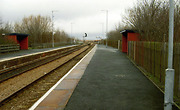 Created by Maureen Anderson
Donated by Maureen Anderson
Created by Maureen Anderson
Donated by Maureen AndersonDated 2009
A desolate looking railway station now all the buildings are gone
More detail » Seaton Carew station - a crowded train
Seaton Carew station - a crowded train
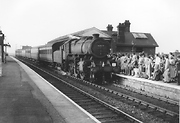 Donated by Hartlepool Library Service
Donated by Hartlepool Library ServiceSteam locomotive 43071 about to pick up a large number of passengers at Seaton Carew Station. This engine was built in 1950, being withdrawn and scrapped in 1967.
More detail » Seaton Station almost demolished
Seaton Station almost demolished
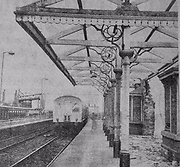 Created by NDM
Donated by Hartlepool Museum Service
Created by NDM
Donated by Hartlepool Museum ServiceDated 1971
Taken in 1972, the decision had been made to use Seaton Station as an unmanned halt. This shows the southbound platform where only the iron rafters remain. The station master's office, parcel office, ticket office and award winning garden had gone and the subway was to be filled in.
More detail » Signal Box Church Street
Signal Box Church Street
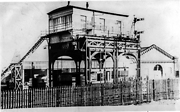 Donated by Hartlepool Museum Service
Donated by Hartlepool Museum ServiceSignal Box Church Street, Hartlepool.
More detail » Sir Vincent Raven
Sir Vincent Raven
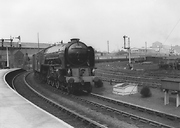 Donated by Hartlepool Library Service
Donated by Hartlepool Library ServiceSteam locomotive 60126, 'Sir Vincent Raven' hauling a long string of passenger coaches at West Hartlepool Station. This engine entered service with LNER in 1949, being re-painted in British Rail colours in 1950. It was withdrawn from service in 1965 and scrapped.
More detail » Special Visitor to Newburn Signal Box
Special Visitor to Newburn Signal Box
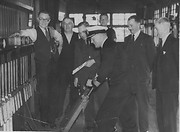 Donated by Mr. Alexander Waterland
Donated by Mr. Alexander WaterlandThe Captain of H.M.S. Diadem, on a courtesy visit to the town in 1947, operates the points in Newburn Signal Box, with local lad Alexander Waterland standing right at the back.
More detail » Station Entrance (1)
Station Entrance (1)
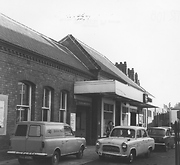 Created by unknown
Donated by Hartlepool Library Service
Created by unknown
Donated by Hartlepool Library ServiceThe entrance to West Hartlepool Station, probably in the 1970s - park where you can!
More detail » Station Entrance (2)
Station Entrance (2)
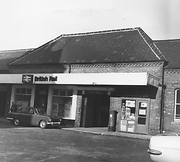 Created by unknown
Donated by Hartlepool Library Service
Created by unknown
Donated by Hartlepool Library ServiceA view of West Hartlepool Station, complete with Pillar Box and a small W.H. Smith outlet.
More detail » Station Taxis
Station Taxis
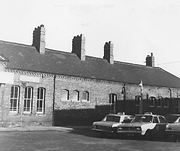 Created by unknown
Donated by Hartlepool Library Service
Created by unknown
Donated by Hartlepool Library ServiceA pair of Mark II Ford Cortina taxis wait outside West Hartlepool Station, probably in the late 1960s/1970s.
More detail » Station in Bloom
Station in Bloom
 Created by NDM
Dated 1986
Created by NDM
Dated 1986For a number of years the station competed in the Best Kept Station competition. This is Jack Clarke, a station porter, tending a flower tub.
More detail » Steam engine at West Hartlepool Station
Steam engine at West Hartlepool Station
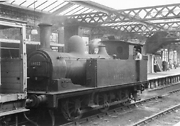 Created by M.F. Hadden
Donated by Hartlepool Museum Service
Created by M.F. Hadden
Donated by Hartlepool Museum ServiceDated 1962
Steam engine class J72 0-6-T No. 69022 at West Hartlepool Station on 3 September 1962
More detail » Steam train at West Hartlepool Station
Steam train at West Hartlepool Station
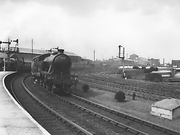 Donated by Hartlepool Library Service
Donated by Hartlepool Library ServiceSteam locomotive 67691 leaving West Hartlepool Station with a string of passenger coaches. This VE-type locomotive was built in 1940, being withdrawn from service in late 1964 and scrapped in early 1965. It ran almost exclusively on the Newcastle to Middlesbrough run.
More detail » Steam train at West Hartlepool Station
Steam train at West Hartlepool Station
 Created by M.F. Hadden
Donated by Hartlepool Museum Service
Created by M.F. Hadden
Donated by Hartlepool Museum ServiceDated 1962
Class Q6 0-8-0 heads a mineral train through West Hartlepool station on 3 September 1962. The train is carrying limestone from Coxhoe Quarry to Steetley
More detail »
 Steam train,school special,at old Hartlepool Station
Steam train,school special,at old Hartlepool Station
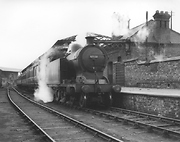 Donated by Hartlepool Library Service
Donated by Hartlepool Library ServiceThe Class A8 steam locomotive No.69888, pulling passenger coaches, waits at Hartlepool Station (Headland). This engine was built at Darlington in 1934 and withdrawn from service in May 1960.
This is probably a 'School Special' from Easington, Horden and Blackhall carrying children attended Henry Smith School.
More detail » The two old Hartlepool (Headland)Railway Stations derelict
The two old Hartlepool (Headland)Railway Stations derelict
A series of photographs showing the derelict (Old) Hartlepool Headland Railway Stations. Images 2 and 6 are interior views of the first Headland station which can be seen on pre 1950s maps as a curved building. On the 1914 map it is labelled Goods Shed. This station was built around 1840.
Image 4 shows Commercial St at the left hand side of the picture, the old station is in the centre and on the right, the large building was an ice house for the fish quay. The Palladium Theatre (1912)/ New Theatre Royal (1868)/ Empress (1899) is in the background with the distinctive air vents on the roof.
Image 1 shows the second Hartlepool Station, opened 1878, centre right with the Carnegie building, once the Headland Library, behind it. On image 9, part of the platform of the second Hartlepool Headland Station can be seen with the library behind.
More detail »
 Trainspotters 1960
Trainspotters 1960
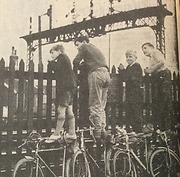 Created by NDM
Donated by Hartlepool Museum Service
Created by NDM
Donated by Hartlepool Museum ServiceDated 1960
The four boys train spotting in Mainsforth Terrace are Philip Johnson, Fred Robson, Dennis Moore and John Waters.
More detail » Trip to Lourdes
Trip to Lourdes
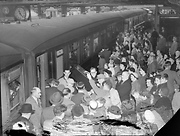 Donated by NDM
Donated by NDMDated 1953
Taken in 1953, the scene is West Hartlepool station where a group of 50 people from the town joined others from the diocese of Hexham and Newcastle on a trip to Lourdes. There were two packed trains. The Hartlepool group were accompanied by Father Dunne of St Joseph's . The Hartlepool Mail reported that there were 14 people on stretchers and 42 walking sick on the trip.
More detail » Victoria Terrace
Victoria Terrace
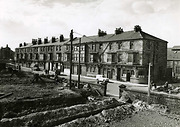 Donated by Hartlepool Library Service
Donated by Hartlepool Library ServiceVictoria Terrace.
The original West Hartlepool station was sited somewhere to the bottom right.
More detail » Wedding - David Watson and Marian Grey Davison
Wedding - David Watson and Marian Grey Davison
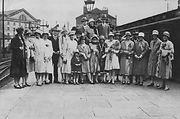 Donated by Mr. John Watson
Donated by Mr. John WatsonDated 1927
Gathered at West Hartlepool Railway Station to send off newly married David and Marian Watson (nee Grey Davison), on July 25th, 1927. Identified so far, from left to right are: 5th from the left Robert Gales; Mollie Keenan; Lilian Keenan; Joan Watson (small girl at front); Meg (Patricia) Watson; Agnes Watson (stripey hat). David and Marian are at the front of the elevated group.
More detail » West Hartlepool Railway Station
West Hartlepool Railway Station
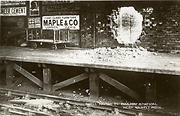 Created by unknown
Donated by Mr. John Davies
Created by unknown
Donated by Mr. John DaviesDated 1914
Damage to West Hartlepool Railway Station.
More detail » William John Wilkin
William John Wilkin
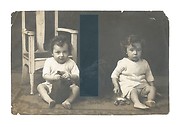 Donated by Ruth Appleby
Donated by Ruth ApplebyThis Photograph is of William John (known as John) Wilkin, who was Station Master at Hartlepool from 1908, moving from Cargo Fleet, until his death in 1921
More detail »




